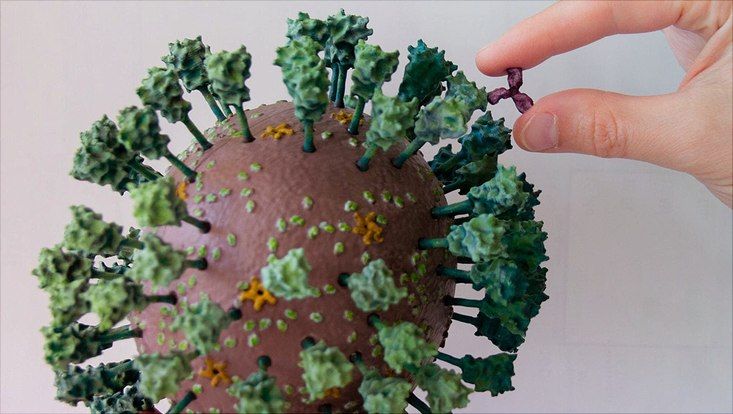Hamburg COVID-19 Series

WEDNESDAY, 10/2/2021 - 4 pm
Dr. Andrea Thorn (UHH) will talk about the international Coronavirus Structural Task Force.
Many scientists in the Hamburg metropolitan area are involved in research related to SARS-CoV-2 and the COVID-19 pandemic. In cooperation with the Helmholtz graduate school for Data Science in Hamburg (DASHH), the Leibniz ScienceCampus InterACt wants to increase the visibility of this research fostering new contacts and potential collaborations. Therefore, the new online Hamburg COVID-19 lecture series started on August 12th.
The series represents unique platform for vivid exchange and takes place every two weeks with a 30-minute lecture and room for further discussions afterwards.
On Wednesday, February 10, at 4 pm Dr. Andrea Thorn (UHH) will present the Coronavirus Structural Task Force (https://insidecorona.net/de/) and talk about their structural biology research on SARS-CoV-2.
Abstract: The Coronavirus Structural Taskforce
As methods developers in structural biology, we usually work far from the spotlight. When the COVID-19 pandemic began, we asked ourselves how we could contribute to the fight against the virus?
As early as February, we started evaluating the structures of macromolecules in SARS-CoV and later SARS-VoV-2 available from the Protein Data Bank and found many could be improved. We set up a website (www.insidecorona.net) and a database containing our evaluation and revised models; met online every day, working on an automatic structure evaluation and revising individual structures. We also engaged in outreach activities, writing blog posts about the structural biology of SARS-CoV-2 aimed at both the scientific community and the general public, refining structures live on Twitch and offering a 3D printable virus model for schools.
In the beginning, there were no tenured academics in the Coronavirus Structural Task Force [1]; we were an ad hoc collaboration of mostly junior researchers across nine time zones, brought together by the desire to fight the pandemic. We lacked management experience, computing facilities and administrative infrastructure. Still, we were able to rapidly establish a large network of COVID-19 related research, forge friendships and collaborations across national boundaries, spread knowledge about the structural biology of the virus and provide improved models for in-silico drug discovery projects. We may have gotten into the spotlight after all.
[1] Croll, T., Diederichs, K., Fischer, F., Fyfe, C., Gao, Y., Horrell, S., Joseph, A. P., Kandler, L., Kippes, O., Kirsten, F., Müller, K., Nolte, K., Payne, A., Reeves, M. G., Richardson, J., Santoni, G., Stäb, S., Tronrud, D., Williams, C. & Thorn, A. (2020). BioRxiv. doi:10.1101/2020.10.07.307546.
For further information please contact the InterACt office or subscribe to our mailing list using the link https://bit.ly/3grlxxz.